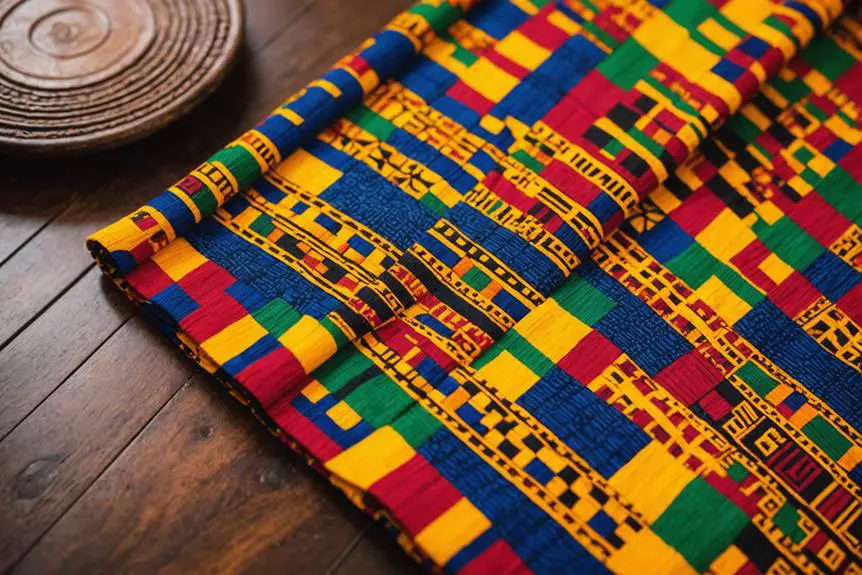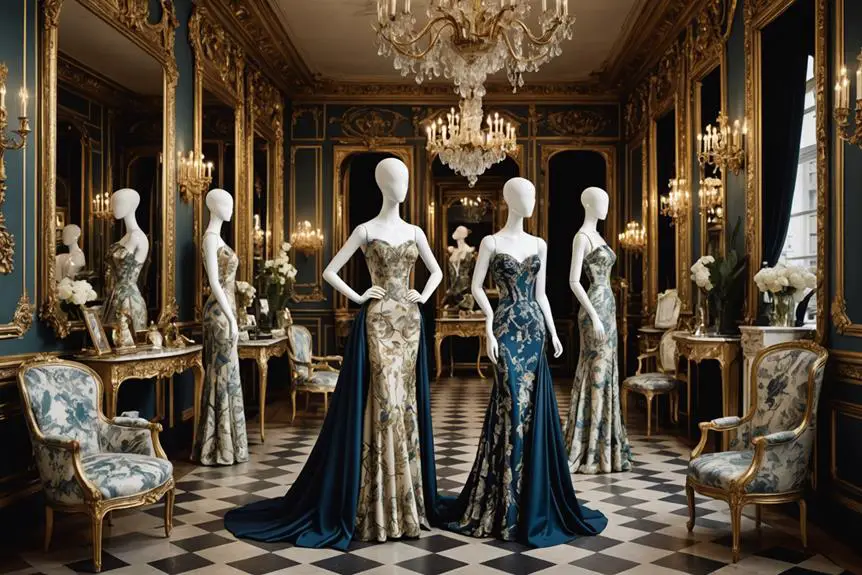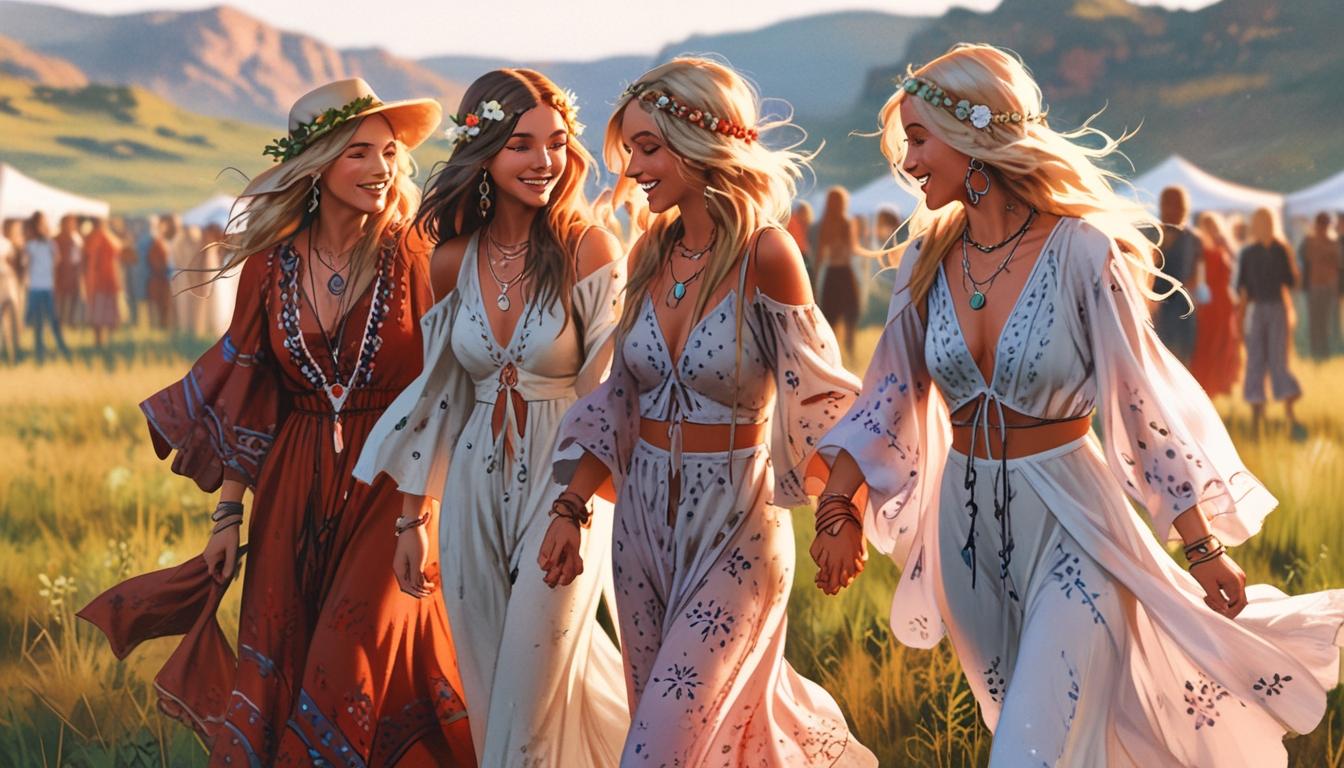When you're looking to identify authentic Kente cloth fabric, you'll want to pay close attention to several key characteristics. Start by examining the craftsmanship; genuine Kente is handwoven, featuring tight weaves and vibrant colors that are both substantial and consistent. As you scrutinize the fabric, consider the cultural significance behind its patterns and colors, which can reveal much about its origin. However, distinguishing true Kente from mass-produced imitations can be tricky, and knowing what to look for is crucial. What other factors should you consider to guarantee your fabric's authenticity?
Historical Background of Kente Cloth

Kente cloth has a rich history that stretches back to the 17th century, originating from the Akan people of Ghana. Can you believe it? This vibrant fabric has a story that's as colorful as its intricate designs! The origins of Kente are often linked to Chief Oti Akenten, who played a major role in popularizing it. Initially, Kente was a fabric just for royalty and special ceremonies. It held such cultural significance that wearing it was like wearing a badge of honor.
But wait, there's more! The Ewe people joined the Kente weaving scene in the 18th century, bringing their own flair and techniques. This collaboration only made Kente even more important in Ghanaian culture. Each piece of Kente tells a story, often reflecting proverbs, historical events, or cultural beliefs. Isn't that amazing? You're not just looking at fabric; you're witnessing a rich tapestry of cultural heritage.
Kente gained global recognition, especially during landmark events like Ghana's independence in 1957. It became a symbol of African heritage that you could spot at various cultural celebrations worldwide. So, next time you see Kente cloth, remember that it's not just a pretty design. It's a celebration of history, culture, and community. Isn't that a fantastic way to connect with the past? You're not just wearing a fabric; you're wearing a piece of history!
Characteristics of Authentic Kente
When you're looking to identify authentic Kente cloth, there are several key characteristics to keep in mind. First off, you'll want to check if it's handwoven. Authentic Kente fabric features a tight and even weave, which means the patterns should be consistent and neat. If it feels flimsy, it's probably not the real deal!
Next, pay attention to the weight of the fabric. Authentic Kente typically uses quality materials like cotton or silk, giving it a substantial feel. This weight contributes to its durability, so if it feels too light, you might want to keep searching.
Vibrant colors are another telltale sign. When you look at the fabric, the colors shouldn't bleed into each other, and the reverse side should look just as well-made—no loose threads or knots here! Neat edges are essential, too. High-quality Kente has finished edges that won't fray, giving it a polished look.
Lastly, don't forget about regional differences. Each weaving town in Ghana has its own unique styles and patterns. Knowing these can help you identify the origin of the fabric and appreciate its cultural significance.
Differences Between Kente and Kente Prints
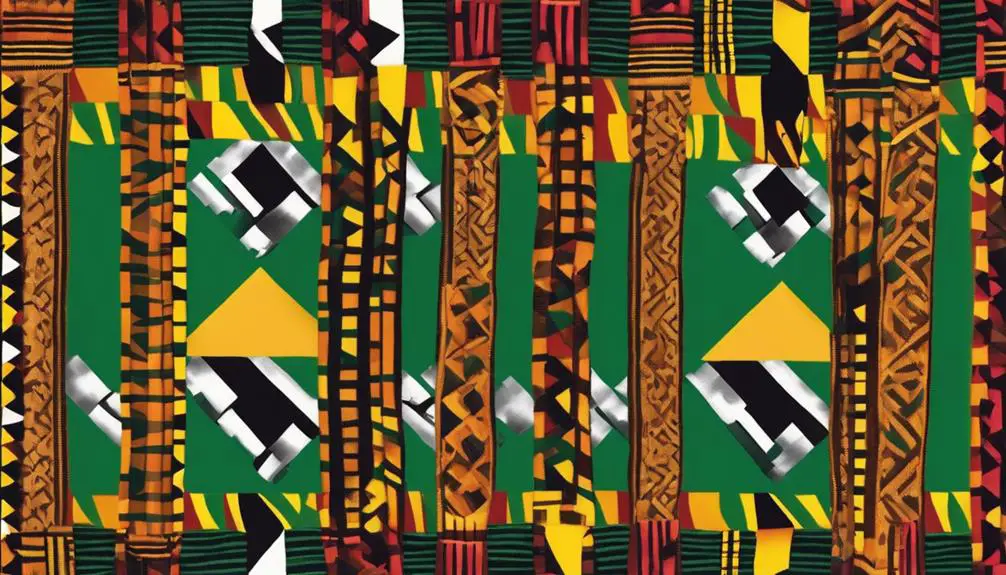
In recent years, the distinction between authentic Kente cloth and Kente prints has become increasingly important for consumers. So, how can you tell them apart? Well, let's explore! Authentic Kente is handwoven using traditional techniques on wooden looms. That means it's crafted with love and skill, resulting in distinct textures and visible woven threads. On the flip side, Kente prints are mass-produced in factories, often lacking the true craftsmanship you'd find in authentic pieces.
You'll notice the difference in price, too. Authentic Kente cloth made through labor-intensive weaving processes usually costs more, while Kente prints are sold at lower prices because they're churned out quickly. But don't be fooled! Just because it's cheaper doesn't mean it has the same value. Authentic Kente designs carry rich cultural meanings, often named after proverbs or historical events. Kente prints, however, can lack this depth, sometimes feeling like a shallow knock-off.
Plus, many Kente prints are manufactured without compensating the original weavers, which undermines the traditional Kente weaving industry. Isn't that a bummer? So, next time you're shopping, keep these differences in mind. You'll be able to spot the authentic Kente cloth made with care and appreciate its beautiful storytelling, rather than settling for a mass-produced print. Embrace the artistry and the culture behind Kente, and make a choice that honors its legacy!
Symbolism of Colors in Kente
Colors in Kente cloth are more than just visual appeal; they carry deep meanings that enrich the fabric's cultural significance. When you look at Kente designs, you're not just seeing a pretty pattern; you're diving into a world of symbolism that reflects the values and history of the Ghanaian people. Ever wondered what each color represents? Here's a quick rundown:
- Black: Strength, maturity, and a connection to mourning and spiritual energy.
- Red: Bloodshed, political passion, and undeniable strength, especially in ceremonies.
- Green: Growth, renewal, and fertility, highlighting the rich agricultural roots.
- Gold: Wealth, royalty, and spiritual purity, perfect for those special occasions.
When you wear or see Kente cloth, you're celebrating cultural identity and unity. Each color tells a story, revealing emotions and values. For instance, black might remind you of resilience and strength, while green could spark thoughts of renewal and hope. Isn't it fascinating how colors can carry such weight?
And let's not forget the vibrant blue, representing peace and love, bringing everything together. Each time you spot these colors in Kente designs, remember they symbolize more than just beauty; they speak of history and heritage. So next time you admire Kente cloth, think about the rich meanings woven into every thread. It's a tapestry of life, culture, and values, all wrapped in colorful, stunning fabric!
Cultural Significance and Usage
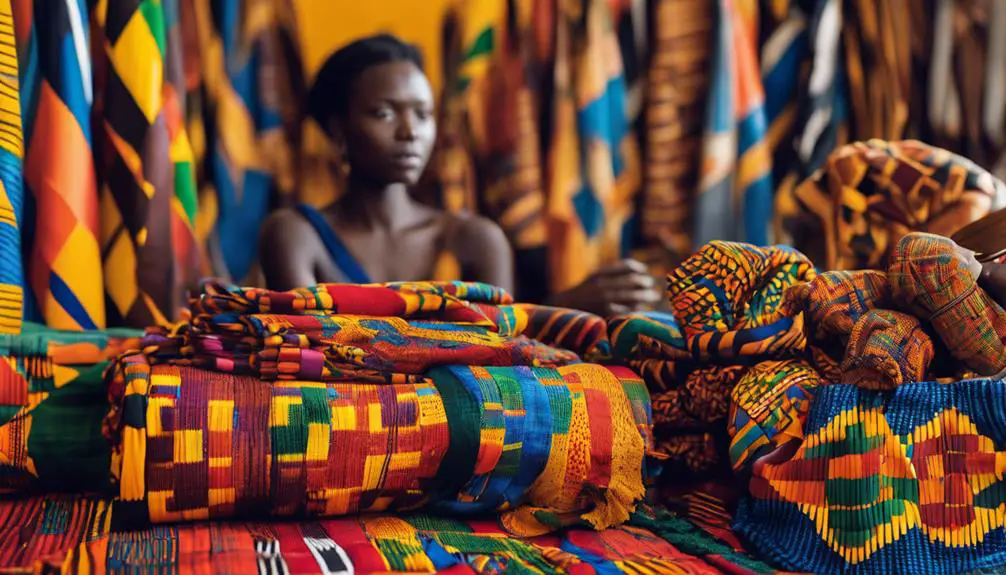
Kente cloth holds profound cultural significance, especially within Akan traditions where it's woven into the fabric of important life events. Originating from Ghana, this vibrant textile isn't just a pretty fabric; it symbolizes wealth, status, and cultural identity. Have you ever wondered why Kente is often seen at weddings or graduations? Each piece tells a story through its unique Kente patterns, inspired by proverbs, historical events, or cultural beliefs. So, when someone wears Kente, they're expressing a personal and communal narrative.
The colors and patterns in Kente cloth aren't random either! Gold represents royalty, while green symbolizes growth. These vibrant hues convey emotional messages, making the cultural significance even deeper. You might be surprised to learn that Kente has gained global recognition as a symbol of African heritage. People in the diaspora proudly wear it to celebrate their identity and solidarity during important events.
But here's the cool part: Kente isn't just for traditional garments anymore. It's making waves in modern fashion, too! You'll find Kente cloth in accessories, like bags and shoes, and even in home decor. So, whether you're rocking a Kente dress or sporting a Kente-themed phone case, you're part of a rich cultural tapestry. Isn't it amazing how a fabric can connect us to history and identity? Next time you see Kente cloth, remember it's more than just fabric—it's a celebration of life and heritage!
Frequently Asked Questions
What Do the Symbols on the Kente Cloth Mean?
Kente cloth isn't just pretty fabric; it's loaded with meaning! Each Kente pattern tells a story, reflecting cultural kente origins and historical kente significance. For example, "Nkyinkyim" symbolizes initiative, while "Osram ne Nsoromma" speaks of love. When you explore Kente symbolism interpretation, you'll see how craftsmanship and vibrant colors come together. Plus, these textiles preserve kente heritage, showcasing community values. So, what's your favorite pattern's story? Immerse yourself and discover!
What Is True of a Kente Cloth?
Kente cloth's got a rich history that'll amaze you! You'll notice its vibrant patterns, each telling a story or celebrating traditions. The craftsmanship shines through, with intricate weaving done by skilled hands, often in specific regions of Ghana. You won't believe how much care goes into choosing materials like cotton or silk. Plus, Kente's not just for fashion; it's part of celebrations and holds deep significance in Ghanaian culture. Isn't that cool?
How to Read Kente Cloth?
When you immerse yourself in reading Kente cloth, pay attention to its incredible Kente patterns! Each design tells a story, reflecting its historical origins and cultural importance. Notice the color significance—like gold for wealth or green for growth. You'll spot technique variations and regional styles that add uniqueness. Don't forget to explore fabric textures and symbol interpretations. Modern adaptations keep it fresh, making it even more exciting! So, are you ready to decode this vibrant fabric?
What Unique Kente Designs and Colors Are Easily Identifiable and What Do They Represent?
When you immerse yourself in Kente designs, you'll spot vibrant colors and unique patterns that tell a story! For instance, gold signifies wealth, while green represents growth. Check out the intricate weaving techniques, like the twisting Nkyinkyim, symbolizing dynamism. Kente's regional styles, from Ewe's nature-inspired designs to Asante's folklore, showcase its rich cultural meanings. And hey, modern adaptations keep this tradition alive! So, what's your favorite Kente color or pattern?
Conclusion
So, next time you're on the hunt for Kente cloth, remember these tips! Look for that tight weave, vibrant colors, and those neat edges – they're your best friends in spotting the real deal. And don't forget the stories behind the colors; they're like secret messages woven into the fabric. Whether you're dressing up or just appreciating the art, knowing what makes Kente special makes it all the more exciting. Ready to rock some authentic style?
